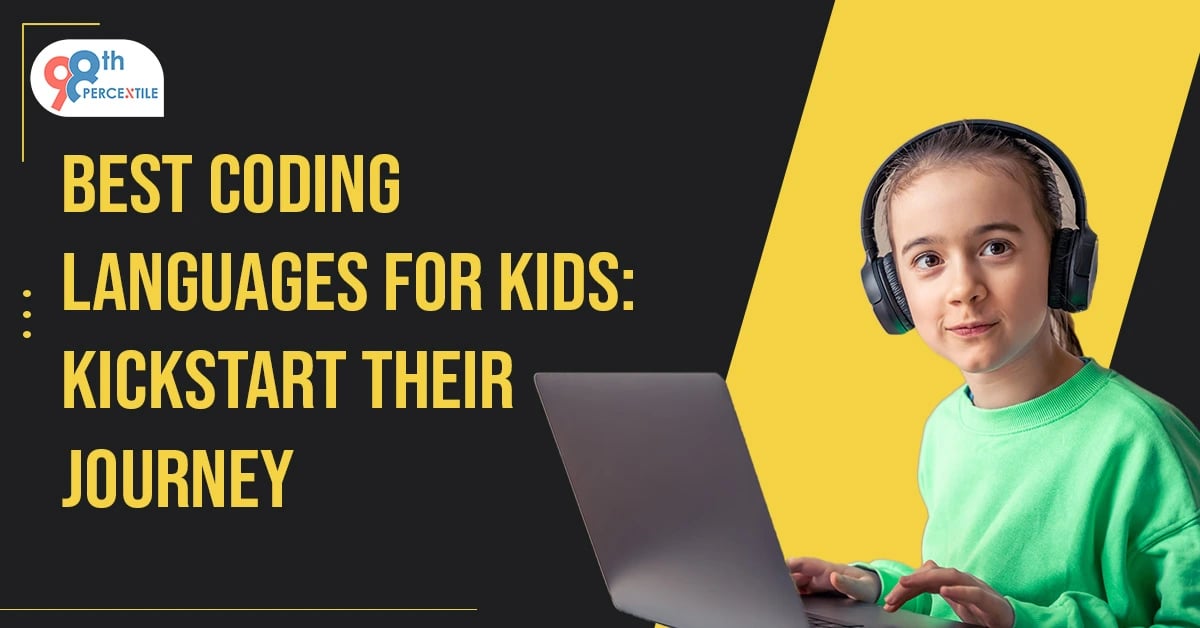In today’s tech-driven world, coding has become a fundamental skill, much like learning a new language. Just as mastering a language opens doors to new cultures and opportunities, coding empowers us to create, problem-solve, and innovate in the digital realm. For school kids eager to embark on this exciting journey, choosing the right coding language can be the gateway to unleashing their creativity and setting them on a path of discovery and learning.
Let's explore some of the best coding languages tailored for kids, igniting their passion for programming and setting the stage for a thrilling coding adventure!

Customising to Demographics and Preferences
Every child is unique, and their interests evolve as they grow. For younger children (ages 5-8), visual, block-based languages like Scratch and Blockly are perfect introductions. These languages offer an interactive, drag-and-drop approach, allowing kids to create animations and games while playfully learning coding fundamentals.
As kids get older (ages 9-12), they might gravitate towards languages like Python or JavaScript. Python’s readability and simplicity make it an excellent choice for beginners, enabling them to create games, animations, and simple projects. JavaScript, though more complex, allows for interactive web-based projects, appealing to kids interested in creating their digital content.
Learn Python, JavaScript & Scratch – Free Trial
Considering Learning Styles:
Children have diverse learning styles—some thrive on visual learning, while others excel in hands-on experiences. For visual learners, block-based languages like Scratch provide a tangible way to understand coding concepts. The colourful blocks represent code snippets, making it easier for them to grasp the logic behind programming.
For hands-on learners who prefer a more textual approach, Python might be a better fit. Its straightforward syntax and immediate feedback encourage experimentation and problem-solving, allowing them to see the direct impact of their code.
Aligning with Goals
Understanding your child’s goals in learning coding is essential. Are they fascinated by game development, interested in building websites, or curious about app creation? Tailoring the choice of coding language to their aspirations can fuel their motivation and enthusiasm.
For aspiring game developers, languages like Scratch, Python, or JavaScript can help them create their games. Those interested in web development can start with HTML/CSS to understand the foundations of website creation. Meanwhile, Swift might capture the attention of kids eager to delve into app development for ios devices.
The Passion for Coding
The key to kickstarting your child’s coding journey is to find the language that ignites their passion. Introduce them to various languages through interactive tutorials, games, or projects. Allow them to explore and experiment, observing where their interest and excitement peak.
Encourage them to create projects related to their hobbies or interests. For example, if they love storytelling, guide them to use coding to create an interactive story or game. If they adore animals, suggest coding a virtual pet or an animal-themed game. This personal connection can make coding more engaging and meaningful for them.
Nurturing Environment Importance
Building a supportive environment is crucial in nurturing their coding journey. Encourage exploration and experimentation, and celebrate their achievements, no matter how small.
Consider enrolling them in coding clubs, workshops, or online communities where they can interact with peers and mentors, fostering a sense of community and motivation.
Importance of Choosing the Right Language
Selecting the right coding language for kids is crucial as it shapes their initial experiences with programming. A language that is engaging, intuitive, and encourages creativity can spark their interest and lay a solid foundation for future learning.
It’s essential to find a balance between simplicity and versatility, allowing kids to grasp coding concepts while having fun exploring their creativity.
Learning Beyond the Language
While choosing a coding language is important, it’s equally vital to emphasise the problem-solving and critical thinking skills that coding nurtures.
Encouraging kids to explore projects, solve puzzles, and collaborate on coding challenges can enhance their understanding of coding concepts regardless of the language they start with.
Conclusion
Choosing the right coding language for your child is a pivotal step in their coding odyssey. It’s about more than just learning lines of code—it’s about fostering creativity, problem-solving skills, and a mindset that embraces innovation.
By considering their age, interests, learning style, and goals, you can guide them toward a language that resonates with them. Whether it’s through visual block-based languages like Scratch or hands-on textual languages like Python, the goal is to empower them to express their ideas, solve problems, and shape their digital future.
So, parents and school kids, embark on this coding adventure together! Encourage curiosity, celebrate achievements, and most importantly, let the joy of coding be the driving force. As your child discovers the language that sparks their passion, watch as their creativity and confidence in the world of coding flourish!
Book FREE Coding Trial Classes Now!
FAQs
Q1: Which is the best coding language for young children (ages 5–8)?
Ans: Scratch and Blockly are great for young kids. The block-based languages are fun, visual, and great for building a strong foundation.
Q2: Which coding language should kids ages 9–12 start with?
Ans: Python is an excellent choice due to its easy syntax and wide usage. JavaScript is also good for web-based projects.
Q3: How to test which language suits my child best?
Ans: Check different factors like their age, interests, and learning style. Try different simple tools and see which language keeps them engaged & excited.
Q4: Can coding help with other school subjects?
Ans: Yes! Coding builds logical thinking, problem-solving, and creativity, which benefit subjects like science, math, and reading comprehension.
Q5: Do children need prior experience to join a coding class?
Ans: No, not at all. Many beginner programs, like 98thPercentile’s, start from scratch and coach children step-by-step.
Join 98thPercentile for more information.

 Students/Staff
Students/Staff Parents
Parents ElevatEd
ElevatEd


-Nov-18-2025-03-57-47-3267-AM.png?width=360&length=360&name=401x226%20(6)-Nov-18-2025-03-57-47-3267-AM.png)



-Jul-22-2025-03-16-52-8797-AM.png?width=360&length=360&name=401x226%20(6)-Jul-22-2025-03-16-52-8797-AM.png)






